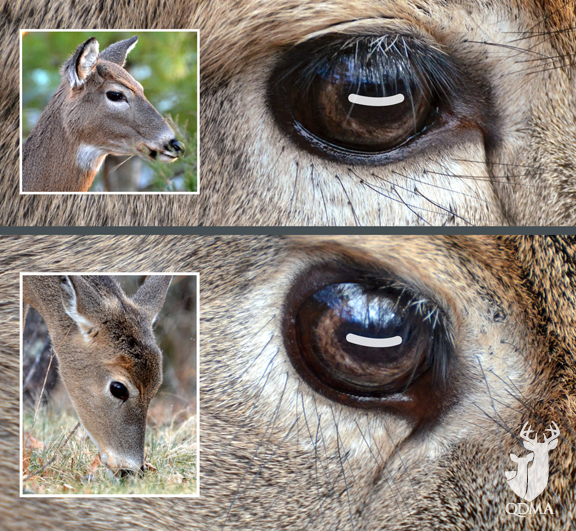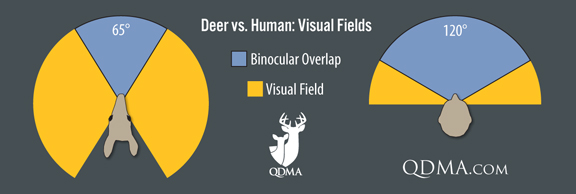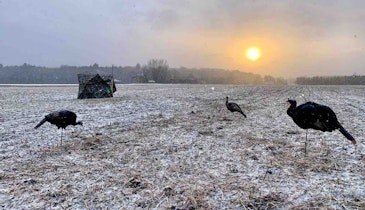Deer always seem to sense your presence. Even while eating, these animals are dialed into their surroundings in ways that hardly seems possible. So how well, exactly, can a deer see? A study by Marty Banks, Professor of Optometry and Vision Science at UC-Berkeley, examines how prey species such as deer can scan for predators constantly and what makes their acute awareness possible.
The study, recently featured by Quality Deer Management Association on its website, shows a deer can rotate its eyes in different directions while feeding regardless of where its head is facing. Many hunters may think — with good reason — that big game like a deer and elk are at their most vulnerable when feeding. For the hunter trying to approach undetected, it’s important to understand a deer’s use of cyclovergence. No, this isn’t sci-fi, this optical edge is what enables deer to detect movement, even in their most “vulnerable” moments.
Related: How long do deer live?
Optics: Deer vs. Hunter
Have you ever looked at the replica eyes a taxidermist uses in mounts? You’ve probably noticed the pupils of a deer are long, horizontal slits. Since a deer’s eyes sit on the sides of its head, their elongated pupils help provide a panoramic, 300-degree field of view. Even as they tilt their heads down to eat, the horizontal pupils keep each eye aligned and level helping the animal keep its view of the surrounding areas.
Compare this to our field of view which is only about 180 degrees wide. Within this horizontal view, objects at a distance are in focus while objects closer are not. On the other hand, it’s the deer’s farsighted nature coupled with its superior ability to detect peripheral movement that makes these animals notoriously difficult to approach. One thing a deer have: eyes in the back of its head. So they can’t see what’s directly behind them, which is why hunters often observe deer regularly checking their back trail.
Related: Can deer fight to the death?
The science behind a deer’s optical edge
Cyclovergence is an optical term used to describe eyes that can rotate in two different directions. As a deer lowers its head, their left eye rotates clockwise 50 degrees while their right eye rotates counter-clockwise 50 degrees. This characteristics can be found among hoofed animals like deer, elk, horses, and sheep.
Cycolvergance, coupled with a deer's near level 300-degree, far-sighted view, give deer a huge advantage over predatory humans. If one deer can cover a 300-degree view while feeding, an entire herd can visually cover every direction of potential ambush from predators. Even when concealed in a tree stand, hunters would improve their chances at stealth by simply pausing and thinking before making even a subtle move. It’s also a good idea to take a range reading before reaching for a bow or gun to improve so hopefully you’ll see the deer before it sees you.
This season as you quietly watch deer feeding, just remember they are rolling their eyes at you from afar. Don't try returning the sass; they might just see you.
Featured photo: John Hafner photography








